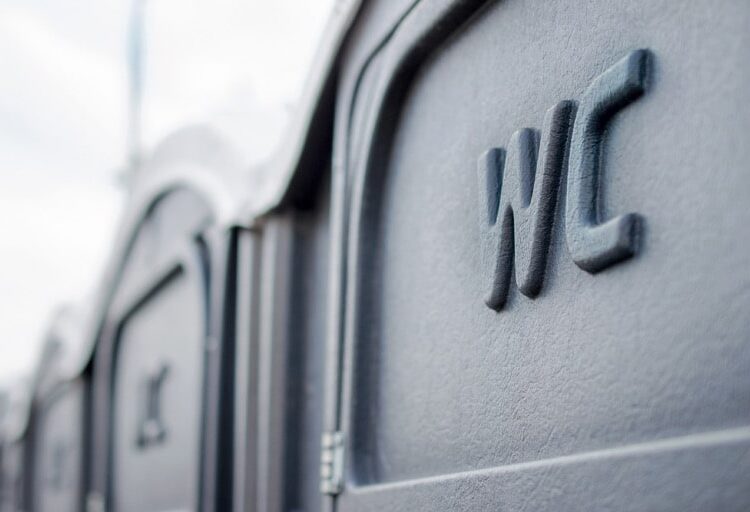When it comes to ensuring a construction site runs smoothly, one often overlooked aspect is the provision of adequate sanitary facilities. While safety gear, equipment, and skilled labor are at the forefront of planning, the comfort and convenience of workers also play a crucial role in productivity and morale.
This is where portable toilets come into play, serving as an indispensable solution for meeting the sanitation needs on-site. This guide delves into everything you need to know about portable toilets for construction sites, from types and placement to maintenance and regulations.
Understanding the Basics of Portable Toilets
Portable toilets, commonly referred to as porta-potties, are self-contained, mobile restrooms that can be easily set up and serviced at construction sites. They are designed to provide a convenient and hygienic solution for workers who spend long hours away from permanent facilities. Key components typically include a toilet seat, a holding tank for waste, ventilation, and sometimes additional features like hand sanitizers or wash stations.
Types of Portable Toilets
1.Standard Portable Toilets:
The most common type found on construction sites. They are basic units equipped with a toilet seat over a holding tank. Some may include a urinal, a small mirror, and a hand sanitizer dispenser.
2.Deluxe Portable Toilets:
These units offer enhanced features such as a flushing mechanism, a larger interior space, and a built-in handwashing station. They are suitable for sites where a higher level of comfort is desired.
3.ADA-Compliant Units:
These are designed to meet the standards set by the Americans with Disabilities Act, providing accessible facilities for workers with mobility challenges. They feature a wider door, spacious interiors, and grab bars.
4.High-Rise Portable Toilets:
Specifically designed for high-rise construction projects, these compact units can be easily lifted by cranes to different floors of a building under construction.
5.Trailer-Mounted Units:
Ideal for larger sites, these restrooms are mounted on trailers and often include multiple stalls and sinks, similar to traditional restrooms.
Choosing the Right Portable Toilet
Selecting the right type of portable toilet depends on several factors:
–Number of Workers:As a general rule, one portable toilet should be available for every ten workers over a 40-hour workweek. This ratio ensures that facilities are readily accessible without long waits.
–Duration of the Project:For long-term projects, investing in higher-quality units with better features might be worthwhile to enhance worker comfort.
–Site Layout:Consider the size and layout of the construction site. For larger sites, multiple units should be strategically placed to minimize the distance workers must travel.
–Local Regulations:Be aware of local health and safety regulations which may dictate the number and type of units required.
Placement and Installation
Proper placement of portable toilets is essential to maximize their effectiveness. They should be placed on level ground in a location that is easily accessible to workers but does not obstruct the flow of materials or machinery. Consider proximity to work areas to reduce downtime, yet maintain a reasonable distance from dining or resting areas to avoid unpleasant odors.
In addition, ensure that the placement allows for easy access by service vehicles for regular cleaning and maintenance. This might involve setting up a designated area for waste pickup and delivery.
Maintenance and Hygiene
Regular maintenance is crucial to keeping portable toilets sanitary and pleasant to use. This includes:
–Regular Cleaning:Depending on usage, units should be cleaned and restocked with supplies at least once a week. High-traffic sites may require more frequent service.
–Waste Disposal:Ensure that waste is disposed of in compliance with local regulations. Reputable service providers will manage this process effectively.
–Ventilation:Good ventilation reduces odors and improves the overall experience for users. Many units come with built-in ventilation systems, but additional measures such as air fresheners can be employed.
Cost Considerations
The cost of renting portable toilets can vary based on several factors:
–Type of Unit:More basic units are generally less expensive than deluxe models with additional features.
–Duration of Rental:Long-term rentals often come with discounts or more favorable terms.
–Frequency of Service:More frequent servicing will increase costs but is necessary for high-traffic sites.
When budgeting for portable toilets, consider both the rental and maintenance costs. Partnering with a local provider can also help reduce transportation fees.
Finding a Reliable Provider
Choosing the right provider for portable toilets can make a significant difference in service quality and reliability. Look for a company with a strong reputation for timely service, cleanliness, and customer support. Local providers, such as those offering Austin porta potty rentals, often have the advantage of quicker response times and local knowledge. They can also provide insights into specific regulations or requirements for the area.




